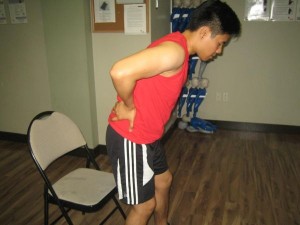The sciatic nerve is the biggest and longest nerve in the body. It travels from the inferior back through the buttock and continues down to the rear of the leg. The sciatic nerve is responsible for controlling movement of various muscles in the thigh and leg as well as providing sensory input to the brain. Once the sciatic nerve is irritated and swollen, it results to sciatica. Take note that this can be an issue for many individuals since it oftentimes disrupts with daily activities while at work or at home.
Remember that sciatica is the usual cause of low back pain and leg pain. This is caused by pressure on the sciatic nerve from a herniated disc. Sciatica is more likely to occur among individuals 30-50 years of age and can be debilitating. The condition typically affects one side of the lower extremities and the pain often radiates from the inferior back up to the rear part of the leg and thigh. Depending on where the sciatic nerve is affected, the pain can even radiate to the toes or foot.
What are the common causes?

There are various causes of sciatica. If the individual experiences the symptoms of sciatica, a doctor should be consulted so that the cause is determined.
Herniated disc
Take note that sciatica can occur when one of the vertebral discs in the inferior back protrudes outward and compress the nerve roots that form the sciatic nerve. The compression leads to the irritation of the nerve and results to swelling and pain along the sciatic nerve. Remember that herniated discs are the common cause of sciatica.
Piriformis syndrome
The piriformis is described as a small-sized muscle situated deep into the buttock area. This muscle assists in abducting (lifting out) and rotating externally the hip joint. The sciatic nerve travels close to the piriformis muscle and even running through it occasionally. As a result, once the piriformis muscle becomes tight, it often adds pressure on the sciatic nerve, resulting to inflammation and irritation.
Lumbar spinal stenosis
Lumbar spinal stenosis is described as the narrowing of the spinal canal in the inferior back area. Once the spinal canal constricts in this region, it leads to the compression of certain areas of the nerves that combine to form the sciatic nerve.
Suitable exercises for sciatica
Strengthening and stretching exercises that focus on the muscles of the lower back, thighs and abdomen can help minimize the symptoms of sciatica. There are also various exercises to help reduce the pain linked with sciatica.
In case sciatica disrupts with the daily activities of the individual while at work or at home, it is best to consult a doctor for proper assessment and diagnosis of the condition. In doing so, the exact cause is determined and the right treatment can be started.
